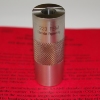I have been using RCBS or Redding dies for a long time, but recently bought the Forster Ultra Micrometer seater die for 223 and love it. So, when I thought about 308 dies I figured I would try a complete set of Forsters. Question is I am reloading for one 308 semi-auto rifle and it looks like Forster has a "Full Length Sizing Die" or "Small Base Full Length Sizing Die", which one to get? I do use the RCBS small base dies for 223, but have read pros and cons - so, any thoughts on which Forster die to get for the 308?
You are using an out of date browser. It may not display this or other websites correctly.
You should upgrade or use an alternative browser.
You should upgrade or use an alternative browser.
Which Forster Die for 308 (RRA LAR-8)?
- Thread starter cwall64
- Start date
- Status
-
Not open for further replies.
I have been using RCBS or Redding dies for a long time,
I was talking to Dillon about their 500B press, they suggested I use their dies because they thought seating and crimping should be two different operations. And I informed them I did need their press because I was not starting over with new dies. At the time I thought I had all the dies I would ever need. It was about that time they informed me it would be OK to use my dies with their press.
I have small base dies, not for cases with small bases because my small base dies will not size the base of the case. My shell holders hold the die off .125" then there is the radius.
Seating dies, all of my seating dies are micro adjust. I use the dial caliper to measure the height of the seating stem. I also use transfers to zero the seating stem. I do like the way competition seating dies align the bullet with the neck of the case.
F. Guffey
The only Forster die I have is for.308 used in my M1A. It's a micrometer seating die. Have a look at it. Along with seating the bullet perfectly straight I am able to switch between 168gr A-Max and SMK with a turn of the dial.
I have been using a Dillon 450 for 40 years. Started with RCBS dies which I still use, added Dillon, Hornady, and Forster to the mix with no problems.
I have been using a Dillon 450 for 40 years. Started with RCBS dies which I still use, added Dillon, Hornady, and Forster to the mix with no problems.
Yes, the Forster Ultra Micrometer seater die in 308 is in the cart (after my experiences with their 223 micrometer seater die), just wanted to try one of their full length sizing dies also and can't decide which one to get...The only Forster die I have is for.308 used in my M1A. It's a micrometer seating die. Have a look at it. Along with seating the bullet perfectly straight I am able to switch between 168gr A-Max and SMK with a turn of the dial.
I have been using a Dillon 450 for 40 years. Started with RCBS dies which I still use, added Dillon, Hornady, and Forster to the mix with no problems.
I'm a big fan of small base dies when loading for semi-auto rifles but I will admit it is mostly a "feel good, kind of an insurance policy" kind of thing for me.
My standard advice is if you do not have a die set, get the set with the small base resize die. If you already have a standard resize die, it will serve you well, but be careful where "new to you" cases come from.
My standard advice is if you do not have a die set, get the set with the small base resize die. If you already have a standard resize die, it will serve you well, but be careful where "new to you" cases come from.
Sunray
Member
The small base resize die is rarely required for any semi-auto. They just size a few thou more than a regular FL die.
However, it really makes no difference. Millions of rounds of .308 have been loaded for semi's(both hunting rifles and semi-auto battle rifles) long before such things as SB dies existed.
However, it really makes no difference. Millions of rounds of .308 have been loaded for semi's(both hunting rifles and semi-auto battle rifles) long before such things as SB dies existed.
Woolecox
Member
- Joined
- Feb 14, 2009
- Messages
- 270
I have found that when I need to FULL LENGTH resize rifle brass, either for an automatic or sticky stuff for a bolt gun, I get the most accurate loads using the Forster Benchrest Full Length Sizing die. I also use their ULTRA™ MICROMETER SEATER DIE but I don't really think it is necessary.
When seating bullets for an AR, I have to seat max magazine length anyway. So, I'm just checking OAL (not comparator) length. I think the Micrometer die is over kill for that. I have never had to use a "Small Base" die.
I have used RCBS, Lee, Hornady, and Redding as well. Nothing has made a better, functioning, more accurate round for my precision AR's over the Forster FL. I use them in the Co-AX press.



100 yard 5.56 three shot group. Berger 77 OTM. Loaded on the Forster.

When seating bullets for an AR, I have to seat max magazine length anyway. So, I'm just checking OAL (not comparator) length. I think the Micrometer die is over kill for that. I have never had to use a "Small Base" die.
I have used RCBS, Lee, Hornady, and Redding as well. Nothing has made a better, functioning, more accurate round for my precision AR's over the Forster FL. I use them in the Co-AX press.



100 yard 5.56 three shot group. Berger 77 OTM. Loaded on the Forster.

Thanks guys, I appreciate the input. I went ahead and ordered the small base version of the die and the ultra micrometer seater. I called Forster today and talked with one of their techs. He basically said the same, probably don't need the small base, but why not get it... BTW very impressed with their phone support, I called the main line and was chatting with tech support in probably under a minute (on a Friday afternoon!).
Woolecox
Member
- Joined
- Feb 14, 2009
- Messages
- 270
Nice going. You won’t regret it. That gear will most likely last several generations. Load up with some quality components, and it will make some match grade ammo.Thanks guys, I appreciate the input. I went ahead and ordered the small base version of the die and the ultra micrometer seater. I called Forster today and talked with one of their techs. He basically said the same, probably don't need the small base, but why not get it... BTW very impressed with their phone support, I called the main line and was chatting with tech support in probably under a minute (on a Friday afternoon!).
In 25+ years of loading the 5.56, here is the best I have found for both my rifles:
- Ramshot TAC (better than Varget, pressures for 5.56 load data published on their website)
- Lapua case (best followed closely by Lake City)
- Berger 77 OTM bullet (shoots even better than the Matchking)
- CCI #41 primer (accurate, prevents slam fires)
I uniform the primer pockets and trim everything to length. I am getting 2772 fps out of my 20” Larue. It shoots sub 1/2 MOA (Better than some of my bolt guns). My Colt LE6920 M4 won’t post those numbers but, that is not what it was made for. 1:8 and 1:7 twist respectively.
Happy/safe shooting!

dh1633pm
Contributing Member
If you plan on using recycled LC brass that was used in a machine gun, you need a small base die. Trust me. If you don't, then skip it. What I did is get the regular dies which I have two sets. One Lee and one C&H. I then bought a RCBS small base. Makes short work of used military machine gun brass.
Woolecox
Member
- Joined
- Feb 14, 2009
- Messages
- 270
Are you shooting a tight match chamber? I have heard several people say this but I order “Once Fired Lake City” brass by the cases and have never had an issue.If you plan on using recycled LC brass that was used in a machine gun, you need a small base die. Trust me. If you don't, then skip it. What I did is get the regular dies which I have two sets. One Lee and one C&H. I then bought a RCBS small base. Makes short work of used military machine gun brass.
If the ammo is going to be loaded for home defense or in a match gun, I always run it through a Sheridan Engineering Case gauge just to make sure. So far, zero issues.
I have even loaded up some 65 grain SGK’s on my Dillon with no issues. Maybe I have just been lucky.

Last edited:
dh1633pm
Contributing Member
Remington 700 Milspec, DPMS AR10, M1A, and Ruger GSR all had problems. My L1A1 did not. Since I was buying once fired LC brass I slowly traced my issues with bolt closing and failures to the bass. A Wilson case gauge was what showed me the problem. A small base die provided the solution. I use the gauge on each piece, failures get the small base, those too long get a trim. Since the safe act the auto have gone away. The Milspec and GSR remain. Took the GSR out today.
DaveInFloweryBranchGA
Member
Sounds to me like you weren't setting your standard full length sizing die down low enough. I too use case gauges and I've found if a standard full length die is set properly, the brass will go fine into the case gauge. The exception being if the die is defective. To date, I've not had a defective full length sizing die in any brand I've owned and I've owned every single brand currently in production.
Case Gauges
Just a note.
Wilson and Dillon case gauges only measure shoulder position and over all case length. They are cut generously in the body dimension.
Cases that gauge in these gauges still may not chamber in a rifle.
The Sheridan Engineering gauges are cut to simulate a SAAMI chamber.
Know what your case gauge measures to avoid surprises.
Just a note.
Wilson and Dillon case gauges only measure shoulder position and over all case length. They are cut generously in the body dimension.
Cases that gauge in these gauges still may not chamber in a rifle.
The Sheridan Engineering gauges are cut to simulate a SAAMI chamber.
Know what your case gauge measures to avoid surprises.
Woolecox
Member
- Joined
- Feb 14, 2009
- Messages
- 270
This is true. I only have one gun that is tighter than a Wilson case gauge. It is an STI competition 9mm. After two or three magazines, the slide won’t lock all the way forward. Unless, I’m shooting new brass or brass that has been small based sized. I use a Lee Small Base sizer in station one on my RL550B. No problem after that.Just a note.
Wilson and Dillon case gauges only measure shoulder position and over all case length. They are cut generously in the body dimension.
Cases that gauge in these gauges still may not chamber in a rifle.
The Sheridan Engineering gauges are cut to simulate a SAAMI chamber.
Know what your case gauge measures to avoid surprises.
As far as 5.56 and 300 BLK go, the Sheridan gauge has been a true test. If they gauge on the Sheridan, they cycle reliably through my AR’s.
Your milage may vary. It is a pretty safe bet though, if it won’t drop in one of these gauges, you don’t want it in your magazine. I have taken pistol rounds that have failed the test and shot them through a factory Glock just fine. But, that is probably the reason they failed in the first place.
dh1633pm
Contributing Member
I actually set my Co-Ax so low with the dies that I bent the cover over the jaws on my press and still could not get the brass size correctly. That's when I got the small base.
RainDodger
Member
I just finished sizing roughly 2,000 .308 cases that were fired in a machine gun aboard a naval ship. I used a standard (not small base) sizing die. All fit in a gauge just fine and the couple hundred that I've loaded and shot recently, functioned fine in a RRA LAR-8.
- Status
-
Not open for further replies.
Similar threads
- Replies
- 3
- Views
- 166
- Replies
- 18
- Views
- 3K

